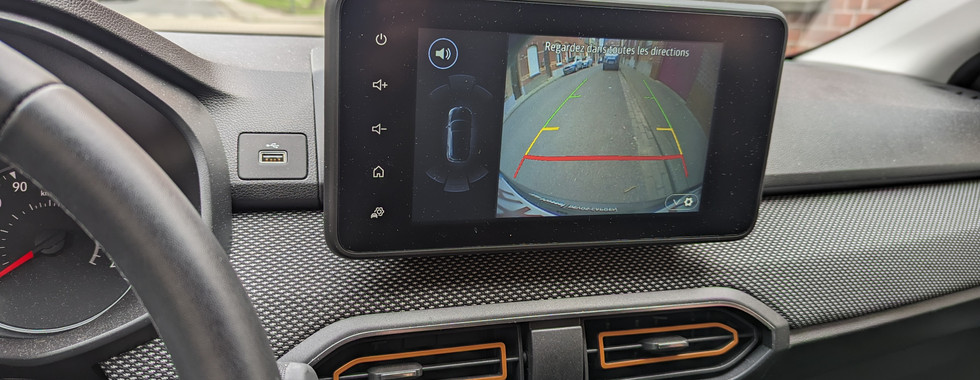[Comparison] Citroën C3 vs Dacia Sandero
- Jérémy

- Aug 19, 2023
- 4 min read

As the Citroën C3 enters the final stage of its career, with its replacement due to be unveiled in less than two months, it faces one of its most formidable rivals in the form of the Dacia Sandero, the latest generation of which has largely taken over the market. Both French and European. A review of the forces involved in this comparison, which promises to be a close one, and which will give us a clue as to the next match, when the C3 will be renewed.
We won't talk about the aesthetics of the two models, except that the Sandero presented here, in its stepway version, is not infamous and that indeed the traces of low cost have been erased, it must be recognised in Dacia, which also explains the success encountered by this generation. For its part, the C3, after 7 years of presence on the market, has lost none of its charm thanks to the possibilities of personalisation, although it is not very present on this C-series version, but its effective restyling has made it possible to restore pep to the C3, which does not demerit compared to the youth of the Sandero.
Inside, Dacia's efforts have been appreciated as the previous generation's cheap effects have been largely eradicated, especially with the addition of grey fabric on the dashboard, which creates a warm atmosphere enhanced by the orange colouring of the various inserts. Of course, the plastics are all hard, but the design is effective and you don't feel the cost-cutting at all. In the C3, Citroën has also succeeded in making this interior an example of design that looks good despite materials that are just as hard as those of the Sandero, at most these plastics sound less hollow in the C3 than on board the Dacia.
In the Sandero the feeling of space is real, the Sandero is much more liveable in the back than the C3, the French do a good job with the front seats. That's a real strength of the Dacia, which offers much more space with just 10 cm more than the C3, which pays for its older design. However, if the Dacia is more liveable, the C3 gives a real slap in the face in terms of seating comfort, with seats that have nothing in common with those of the Dacia, which are softer, wider and more qualitative. Another fault of the Sandero is the very (too) simple multimedia system, which is not a multimedia system at all, but an advanced radio with a screen that is too tilted, not very responsive and with a rather crude design. Even if the C3 is no longer an example of modernity in this respect, it still has a clear advantage over its Romanian rival with a higher quality, faster and more responsive screen.
The low-cost side of the Sandero can be seen in two elements that allow us to really see where the Romanian brand has tried to save money. The tailgate has almost no plastic trim inside, the sheet metal is bare, while the C3 is completely covered in plastic, which contributes to the style as well as the soundproofing, we will see later. . The fuel filler flap is also remarkably light and fragile on the Sandero, it's just a piece of body coloured plastic that never locks, only the fuel cap closes with the key. Here again the C3 offers a much better quality, more solid looking hatch that locks with the car doors.
The quest for economy is therefore less visible, even if it is present on the Sandero and certain elements inevitably betray this low-cost side, but it is at the wheel that the differences between our two protagonists of the day grow. Both equipped with petrol engines with automatic transmission, the Sandero is much noisier to drive with an engine that is very audible in the cabin both in town and on the motorway, which does not facilitate long journeys. If the C3 is not an example of silence, especially with this EAT6 automatic gearbox, it knows how to be more discreet than the Sandero, from which it retains a clear lead. This is also the case for fuel consumption, since on the same test route it is a difference of almost one litre in favour of the C3, the Sandero consuming almost 6 litres per 100, on a route made up of motorway, expressways and city, while the C3 consumes just under 5 litres. Again, an advantage for the Citroën, which is much more convincing than the Romanian once you get behind the wheel.
Another major advantage of the C3 over the Dacia Sandero is, of course, its comfort, again unrivalled, the two cars certainly not in the same category. Where the C3 is an example of softness, the Sandero is firmer, less comfortable and very clearly outdone by the small herringbone saloon, which here confirms everything that is expected of a Citroën.
In conclusion, Dacia has made enormous progress with this third generation Sandero, which in this stepway version is not cheap, if we do not dwell too much on certain details. However, the Romanian brand is still a long way behind when it comes to driving the car, where it is left behind by the significantly older C3 in terms of comfort, quietness, enjoyment and fuel consumption. If the Sandero is much more comfortable than the C3, it is still a long way off, which bodes well for the next generation of Citroën's saloon, which will have the chance to give the Sandero a run for its money if it manages to offer the same level of comfort and driving pleasure without being too expensive.

























留言